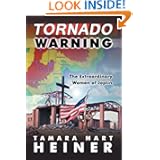Scene charts identify elements and see where there are holes so writers know what needs improvement. In scene 8.2, I listed the primary emotion I wanted the reader to feel as FEAR. Karlinah's young sons speak with her about what will happen if the Lamanite warriors attack. She attempts to keep them calm even while she worries. I went back through to see if I could add small bits that show her fear. For example:
I added the small action of her swallowing before answering with a steady voice.
She made certain her own face didn't betray her worry.
Something squeezed at her heart. If these
warriors came to Ishmael, how many more men—men like her father and brothers, and
Timothy—might die?
After reading through a scene, I fill in information about what the character wants to achieve, which is different from the scene goal, the primary emotion I want readers to feel, and the source of tension/conflict, etc. Once I define what the biggest source of tension is, I can go back and see what I can do to ramp it up. If I can't define what my character wants, then I need to revise and include that or scrap the scene. TIP: I highly recommend using some kind of method (list, chart, map, spreadsheet) that forces a writer to identify the goals and other elements of the scene.
In case you missed it last week: I want to give a shout out to my sister-in-laws' incredible non-fiction book. She spent years preparing this unique volume for those who are interested in LDS history, curious about the temple, and/or appreciate a fascinating read. Learn more at https://www.woodruffswitness.com/

Jennifer Ann Mackley says, "After 15 years, I am pleased to announce the release of Wilford Woodruff's Witness. Wilford Woodruff's Witness chronicles the development of LDS temple doctrine and practices over the course of the nineteenth century. The compelling story is accompanied by more than 120 archival images--some previously unpublished--and is told from Wilford Woodruff's perspective, as preserved in his letters, discourses, and journals."
After reading through a scene, I fill in information about what the character wants to achieve, which is different from the scene goal, the primary emotion I want readers to feel, and the source of tension/conflict, etc. Once I define what the biggest source of tension is, I can go back and see what I can do to ramp it up. If I can't define what my character wants, then I need to revise and include that or scrap the scene. TIP: I highly recommend using some kind of method (list, chart, map, spreadsheet) that forces a writer to identify the goals and other elements of the scene.
In case you missed it last week: I want to give a shout out to my sister-in-laws' incredible non-fiction book. She spent years preparing this unique volume for those who are interested in LDS history, curious about the temple, and/or appreciate a fascinating read. Learn more at https://www.woodruffswitness.com/

Jennifer Ann Mackley says, "After 15 years, I am pleased to announce the release of Wilford Woodruff's Witness. Wilford Woodruff's Witness chronicles the development of LDS temple doctrine and practices over the course of the nineteenth century. The compelling story is accompanied by more than 120 archival images--some previously unpublished--and is told from Wilford Woodruff's perspective, as preserved in his letters, discourses, and journals."


.jpg)